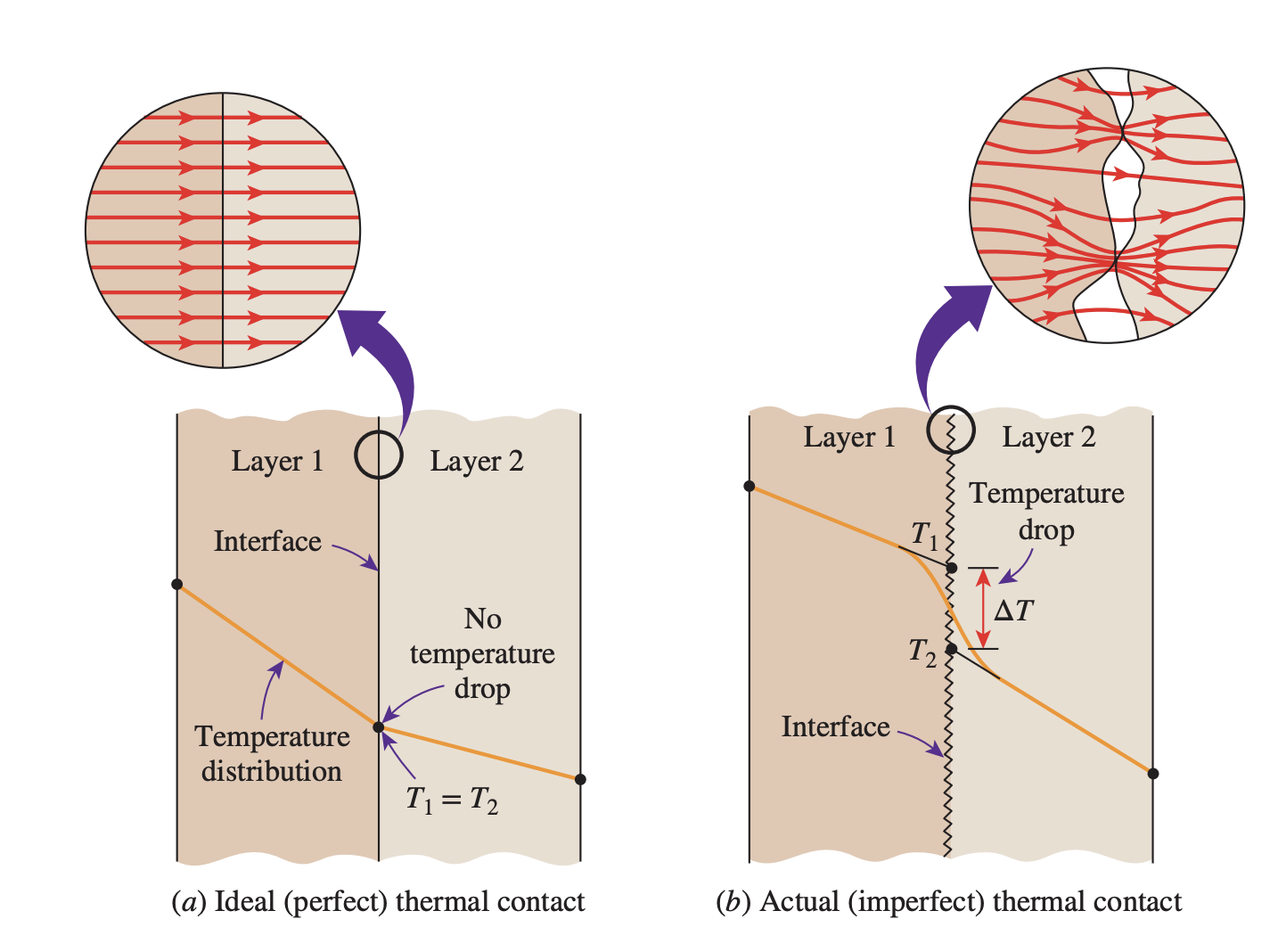In the analysis of heat conduction through multilayer solids, we assumed “perfect contact” at the interface of two layers, and thus no temperature drop at the interface. This would be the case when the surfaces are perfectly smooth and they produce a perfect contact at each point. In reality, however, even flat surfaces that appear smooth to the eye turn out to be rather rough; a surface is microscopically rough no matter how smooth it appears to be.
When two such surfaces are pressed against each other, the peaks form good material contact but the valleys form voids filled with air in most cases. As a result, an interface contains numerous air gaps of varying sizes that act as insulation because of the low thermal conductivity of air. Thus, an interface offers some resistance to heat transfer, and this resistance for a unit interface area is called the thermal contact resistance, .
Thermal contact resistance is given by:
where is the thermal contact conductance.
The value of thermal contact resistance depends on:
- Surface roughness
- Material properties
- Temperature and pressure at the interface
- Type of fluid trapped at the interface
